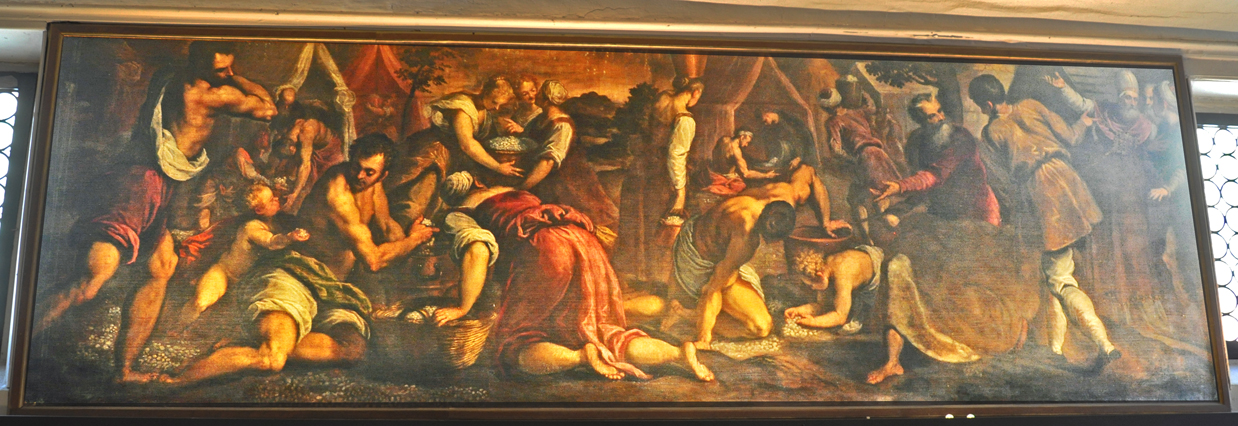Jacopo Palma il Giovane, The Fall of Manna

1580-81
Medium
Church of San Giacomo dall'Orio, Venice
The scene is described in Exodus 16:13-31. Each morning after the dew would fall and turn into what Moses told them was "the bread which the Lord hath given you to eat."
On the far right we see Moses saying just that as he gestures toward a tub that two half-dressed Israelites are filling with manna. He can be identified by two wisps of white hair that rise from his temples, Palma's way of referring to the light rays or horns that had designated Moses in other works. Still farther to the right, Aaron gestures to Heaven. On his chest is the breastplate prescribed in Exodus 28:15-21. On his head is what seems to correspond to the "turbans" prescribed in Exodus 28:49.
But Palma has put both these men in the relatively dim light away from the main action. The stars of the painting are the heroic Israelites who are collecting the manna. The men are half-dressed so we can see their powerful muscles in the morning sun. Even the fully-dressed woman in the center has legs and an arm that would do justice to an Olympic athlete. The work was painted just after the liturgical reforms of the Council of Trent, which sought to emphasize the relationship between the laity and the sacraments, of which the manna was a type (John 6:26-35). Conceivably, the present painting may have been composed with that new emphasis in mind.
View this image in full resolution.
Read more about images of the Fall of Manna.
Photographed at the site by Richard Stracke, shared under Attribution-NonCommercial-ShareAlike license.